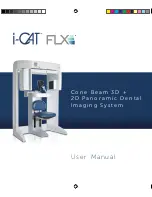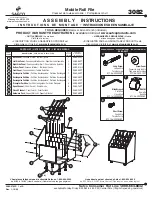
14.
Aspirate and Flush
1. Attach primed extension set and/or sterile normal saline-filled syringe.
2. Aspirate for adequate blood return and flush each lumen of the catheter to ensure patency. In addition, lock each lumen of the
catheter with heparinized saline. Usually, one mL per lumen is adequate.
Caution:
To reduce potential for blood backflow into the cathetr tip, always remove needles or needleless caps slowly while
injecting the last 0.5 mL of saline.
3. Clamp catheter.
WARNING: The fluid level in the catheter will drop if the catheter connector is held above the level of the patient’s heart and
opened to air. To help prevent a drop in the fluid level (allowing air entry) while changing injection caps, hold the connector
below the level of the patient’s heart before removing the injection cap.
15. Dress Catheter
StatLock* Catheter Stabilization Device Procedure
Single Lumen
1. Secure catheter with
StatLock
* catheter stabilization device.
2. Cover site and
StatLock*
catheter stabilization device with transparent dressing.
3. Place anchor tape sticky side up, under hub. Wedge tape between hub and wings.
4. Chevron anchor tape on top of transparent dressing.
Dual Lumen
1. Secure catheter with
StatLock*
catheter stabilization device.
2. Cover site and
StatLock*
catheter stabilization device with transparent dressing.
3.
Place 1st anchor tape sticky side up, under one extension leg. Wedge tape between hub and wings. Chevron anchor tape on
top of transparent dressing.
4.
Place 2nd anchor tape sticky side up under hub. Wedge tape between hub and wings. Chevron anchor tape on top of transparent
dressing.
Tape Strip Securement Procedure
Single Lumen
Dual Lumen
1.
Place 1st anchor tape over wings or bifurcation.
2. Cover site and 1st anchor tape with transparent dressing up to hub, but not over hub.
3.
Place 2nd anchor tape sticky side up under hub and close to transparent dressing. Wedge tape between hub and wings. Anchor
only one hub of dual lumen catheter.
4. Chevron 2nd anchor tape on top of transparent dressing and place 3rd anchor tape over hub.
Caution:
The catheter must be secured in place to minimize the risk of catheter breakage and embolization.


























